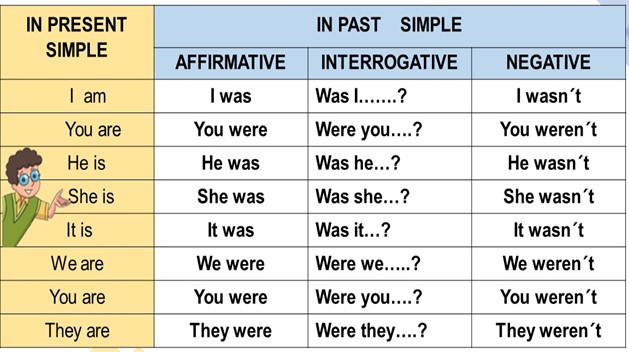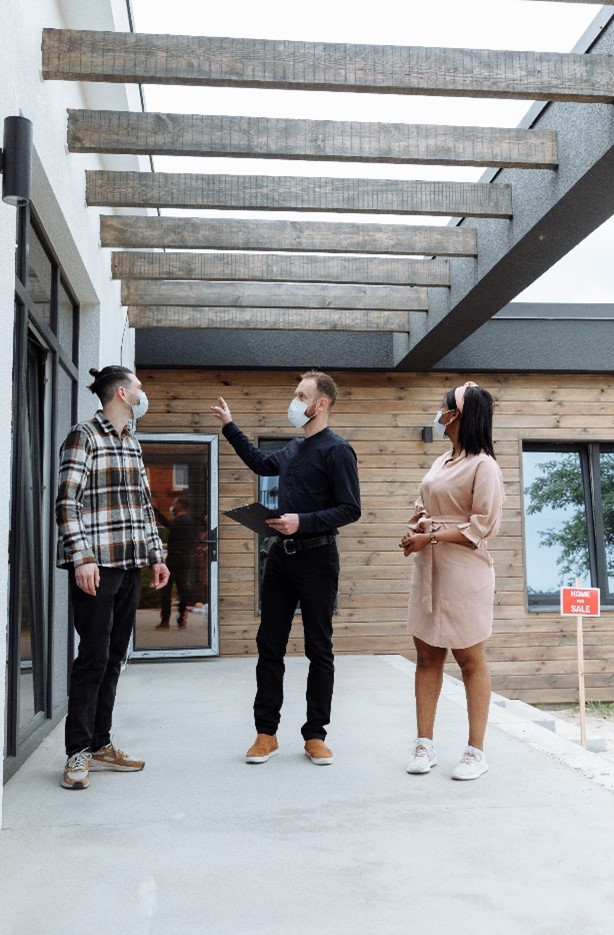I. THE PAST SIMPLE - WHAT YOU SHOULD KNOW

Let´s begin by reading and analyzing the following text:
Kobe Bean Bryant was born on August 23, 1978, in Philadelphia, Pennsylvania. Bryant was the son of former NBA player Joe "Jellybean" Bryant. Kobe was a dominant scorer. He won five NBA championships and the 2008 MVP Award with the Los Angeles Lakers. He surpassed Michael Jordan for third place on the NBA all-time scoring list in December 2014, all of which made him establish himself as one of the game's all-time greats. He retired in 2016 after scoring 60 points in his final game. On January 26, 2020, he was in a helicopter crash that killed Bryant, his 13-year-old daughter Gigi and seven others. He was only 41 years old when he died.
Notice that the verbs “was born, won, surpassed, made, retired, killed” are in the past simple and they all come after a subject/noun/pronoun (Murphy, 2019, p.10). Now, verbs in the past simple can be regular or irregular.
1.a. REGULAR VERBS
As you probably remember, very often the past simple ends in -ed . These are called regular verbs. Here are some examples:

- My sister owns a nice restaurant now. Before that, she worked in a department store.
- Jim and Lilly invited us to their wedding, but we decided not to go.
- Kobe Bryant spent his early years in Italy.
- Koby joined the NBA straight out of high school.
- That policeman near the door stopped us on our way to the office yesterday.
- My little brother is happy because he passed all his exams. I congratulated him because he studied very hard.
Analyze stopped and studied
- Stop-Stopped: Depending on the number or the stress of the syllables in the verbs, we will sometimes have to repeat a letter. For example in stopped, robbed, preferred.
- Study-Studied: In verbs ending in “y” , we will have to change y-->into “I”. For example in study-studied, marry-married, try-tried, hurry-hurried.
1.b. IRREGULAR VERBS

Many other verbs are irregular. It means that the past simple does not end in -ed. Here are some other examples:
See / saw
We saw many interesting books at the Chicago Art Book Fair a few days ago.
Go / went
My family and I went to the theater many times last year.
Write / wrote
Sor Juana Ines de la Cruz was a genius. She wrote her first dramatic poem when she was eight years old.
1.c. QUESTIONS AND NEGATIVE SENTENCES WITH OTHER VERBS.
Remember that in questions and negative sentences we use did/ did not + base form. Look at the following examples:
A: Did Patrick enjoy the concert?
B: No, he did not enjoy it much. He was feeling sick.
A: Did he go to the doctor?
B: No, he didn´t.
A: Did you see the lunar eclipse last night?
B: No, I did not see it.
A: How many people did Jim & Lilly invite to their wedding?
B: They did not invite many people; just their families and closest friends.
A: Did you buy many things in your trip to Chicago?
B: No, I did not buy many things because I did not have much money.
II. PAST TENSE WITH THE VERB TO BE

“To Be” is an irregular verb, but it DOES NOT ever use “ed” at the end. It has a conjugation of its own. Look at the following example and chart:
- Super Mario Bros was my favorite video game some years ago.

III. CONSOLIDATION. NOW TRY THE FOLLOWING QUIZ.
Choose the correct answer to complete the following sentences correctly.
IV. LANGUAGE USE PRACTICE
PAST SIMPLE – BE – REGULAR & IRREGULAR VERBS
V. READING COMPREHENSION AND VOCABULARY BUILDING
Four Zones of Personal Space
 (I)The distance surrounding a person forms a space. The space within intimate distance and personal distance is called personal space. The space within social distance and out of personal distance is called social space, and the space within public distance is called public space.
(I)The distance surrounding a person forms a space. The space within intimate distance and personal distance is called personal space. The space within social distance and out of personal distance is called social space, and the space within public distance is called public space.
- (II). Personal space is the region surrounding a person which they regard as psychologically theirs. Most people value their personal space and feel discomfort, anger, or anxiety when their personal space is encroached. Permitting a person to enter personal space and entering somebody else's personal space are indicators of perception of those
people's relationship. Entering somebody's personal space is normally an indication of familiarity and sometimes intimacy. However, in modern society, especially in overly crowded urban communities, it can be difficult to maintain personal space, for example when in a crowded train, elevator or street. Many people find such physical proximity to be psychologically disturbing and uncomfortable, though it is accepted as a fact of modern life.
(III) Hall (1966) categorized the distance people keep in interpersonal interactions into four zones, by the degree of closeness: intimate, personal, social and public distance, also referred to as space.
(IV) Intimate distance is the closest zone (1 to 46 cm). This territory stretches from direct physical contact, such as hugging and touching, to whispering. Handshakes, however, are not counted within the intimate distance. This is because they take place in more formal settings and the people create ample space in between by stretching out their arms. A very limited number of people from our social circles are allowed into this zone – loved ones and close members and friends.
(V) Personal distance stretches from 46 cm to 1.2m. Interaction between family members, friends and good acquaintances takes place within this zone. People stand at an arm’s length and an occasional pat on the shoulder isn’t inappropriate. If a stranger intrudes on this personal space, it causes psychological discomfort. Sometimes it’s inevitable. For instance, in crowded streets and public transport where it’s impossible to create more personal space or remove oneself from the environment. In this case, people try to psychologically shield themselves by closing their eyes, reading a book, listening to music through earphones.
(VI) Social distance is the next layer, from 1.2m to 3.7m. It is maintained between colleagues in formal settings, new acquaintances and strangers in public places. If a stranger moves beyond these boundaries in a conversation, it feels uncomfortable and threatening. The result is that the person wants to hastily step away from the intruder.
(VII) Public distance spreads from 3.7m to 7.6m and over. It is the space for speaking in front of the larger audiences, such as in classrooms, auditoriums, theaters and so on. In such events, the speakers make decidedly noticeable changes in their language. They choose a different speech register and appeal. They switch their non-verbal behaviors _speaking louder and changing posture in a way to appear more confident.
(VIII) A person's personal space is undoubtedly carried with them everywhere they go. It is the most inviolate form of territory. Body spacing and posture, according to Hall, are unintentional reactions to sensory fluctuations or shifts, such as subtle changes in the sound and pitch of a person's voice. Social distance between people is reliably correlated with physical distance, as are intimate and personal distance, according to the former delineations. Hall did not mean for these measurements to be strict guidelines that translate precisely to human behavior, but rather a system for gauging the effect of distance on communication and how the effect varies between cultures and other strictly environmental factors
In conclusion, it is critical to be aware of the cultural rules and practices around proxemics in order to avoid misinterpretation and ensure effective cross-cultural interaction
VI. PRACTICE I
For each question or statement, mark the correct answer.
BIBLIOGRAPHY
Azar, B. S. (2003). Fundamentals of English grammar. Longman.
Carter, R., & McCarthy, M. (2006). Cambridge grammar of English: a comprehensive guide; spoken and written English grammar and usage. Ernst Klett Sprachen.
Murphy, R. (2019). English Grammar in Use. Fifth Ed. Cambridge.
Murray, L. (2014) English Grammar. Cambridge University Press.
Berry, R. (2018). English grammar. Routledge.
Leech, G., & Svartvik, J. (2013). A communicative grammar of English. Routledge.
WEB RESOURCES
Image 1_Free stock photos_https://www.pexels.com/photo/ball-on-hoop-358042/ Photo by Edgar Colomba from Pexels
Image 2_Free stock photos_ https://www.pexels.com/photo/woman-eating-bruschetta-1537635/ Photo by Adrienn from Pexels
Image 3_Free stock photos__https://www.pexels.com/photo/photo-of-opened-book-3007370/Photo by Sofia Alejandra from Pexels.
Image 4_Free stock photos_https://www.pexels.com/photo/old-video-game-pad-with-controller-and-cassette-4502978/Photo by Mateusz Dach from Pexels
REFERENCES
Chart 1. Own source
Graziano, M. S., & Cooke, D. F. (2006). Parieto-frontal interactions, personal space, and defensive behavior. Neuropsychologia, 44(6), 845-859.
Hall, E. T. (1966). The hidden dimension. New York, NY: Doubleday
CREDITS
- (2021) Practice exercise written by Connie Reyes-Cruz_Language Department at ENES-LEON UNAM
- Audio version performed by Sally and Matthew_Voicemaker_Text to Speech Converter_Connie Reyes 2022 Subscription
- Text posted by Lote Agency. Retrived and adapted from (2021)_ https://www.loteagency.com.au/how-does-your-culture-affect-personal-space/_. Published on September 25, 2020.
- Practice exercise written by Connie Reyes-Cruz_ Language Department at ENES-LEON UNAM
- Audio version performed by Sally and Matthew_Voicemaker_Text to Speech Converter_Connie Reyes 2022 Subscription
- Image 1_Free stock photos_https://www.pexels.com/photo/fashion-man-love-people-8482553/Photo by Thirdman from Pexels